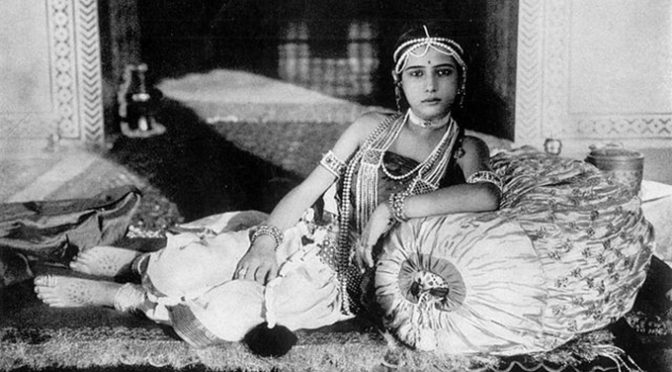Premiering in 1925, this is one of those films whose unusual origins are in danger of overshadowing the work itself. While it remains an undeniably interesting work for the silent film specialist, its adherents in the general filmgoing world are likely to be few and far between.
A German-Indian co-production, The Light of Asia (Prem Sanyas / Die Leuchte Asiens) was the first of a loose trilogy on historical/mythological Indian themes by the director Franz Osten, the actor-producer (and co-director) Himansu Rai and the screenwriter Niranjan Pal. The trilogy continued with Shiraz (1928) and A Throw of Dice (1929), both of which have previously been featured at the Cambridge Film Festival.
In addition to its German and Indian ingredients, the film had strong British connections. It was based on a 19th-century verse epic on the life of Prince Siddhartha Gautama, better known as the Buddha, by Sir Edwin Arnold, while its UK premiere was a private screening for the Royal family at Windsor Castle. (The intertitles at this CFF performance were the original English ones, apparently taken directly from Arnold’s poem.) Arnold’s intention was to introduce Buddhism to the British public, and in doing so he seems to have played up the parallels between Buddha and Christ. (It can be no coincidence that Arnold’s title resembles Christ’s self-description in the Gospels as ‘the light of the world’.) The introductory nature of the poem is emulated by the film, which begins in contemporary India: a group of European tourists ask about the Bodhi Tree and are told the story of the young prince who became the Buddha.
The German investment in the film meant that it had a much higher budget than its Indian counterparts. It was filmed on location in the same places as the story, using existing palaces and streets and employing vast numbers of extras. The film creates a series of ambitious set-pieces relating to Prince Gautama’s life before he rejected his birthright and sought to understand the world for himself: there is a hunt, competitive games, splendidly realised interiors and a plethora of elephants.

Co-directors Osten and Rai evidently believed that simply recording the visual riches in front of them would suffice to get the story across: a few flourishes aside, there is no attempt to emulate the imaginative exuberance or detailed naturalism of Osten’s German compatriots like Murnau and Lang. While impressive for the time, however, the spectacle on offer is unlikely to have the desired effect on a modern audience. The film also treads an extremely faithful line in depicting its protagonist, very much in the same way as most early films about Christ. Like them, it relies on the addition of the audience’s own piety to be wholly effective; without this, it suffers the same suffocating flatness of characterisation and lack of light and shade that have given the classic Hollywood religious film such a bad reputation.
The opening titles disarmingly point out that most of the actors took time out of their busy lives as doctors, lawyers and so on to play these roles. Given this, along with the constraints of a decorously religious subject and the film’s dependence on overwritten (in both senses) intertitles, it would surely be too much to expect any more than a very basic acting style from the performers. On the other hand, Seeta Devi — whose birth name was the rather more prosaic Renee Smith and who by all accounts was only 12 or 13 when the film was made — is at least able to bring an authentic youthfulness and innocence to the role of Gautama’s bride Gopa.
A distinct plus for this particular performance of the film was the accompaniment of pianist John Sweeney, who kept up a swirl of music which fully matched the events depicted on screen.

